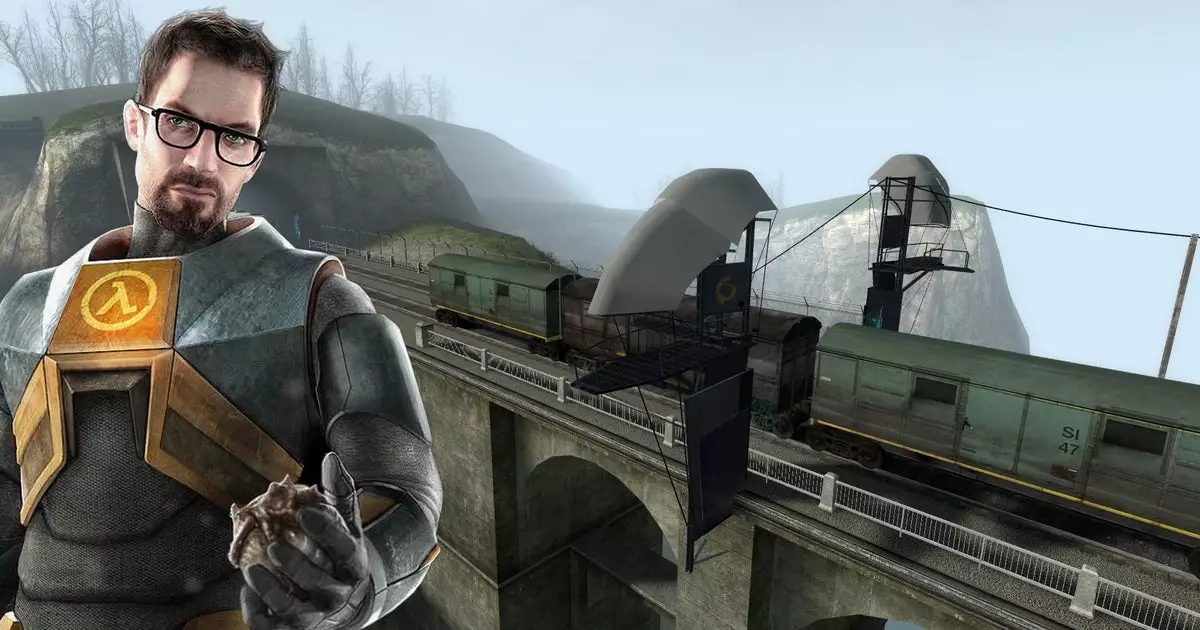In an era where AAA titles launch with fanfare but often fade into obscurity within a few years, the ongoing commitment to refining timeless classics like Half-Life 2 exemplifies how dedicated developers preserve the cultural and technical relevance of their creations. Recent updates to this beloved shooter demonstrate that even decades after its debut, a game can be kept alive through minor yet meaningful adjustments. These seemingly insignificant patches reinforce the idea that true craftsmanship involves meticulous care—touching up details that players might not have noticed but that shape the overall experience. It’s a testament to the enduring legacy of Half-Life 2 that Valve continues to maintain and tweak its origins, ensuring that the game remains engaging and playable for new generations and nostalgic veterans alike.
The Impact of Fine-Tuning Gameplay Mechanics
One particularly noteworthy update involves restoring the train’s original speed in the “Highway 17” chapter. This is not merely a cosmetic change but a deliberate attempt to recalibrate the difficulty to match the initial design intent. For nearly twenty years, players have debated and strategized around this pivotal encounter—balancing between daring to outrun the locomotive or waiting for it to pass. The reversion to its former velocity re-establishes a core gameplay principle: players should have the opportunity to challenge the game’s mechanics, to test their skill and reflexes against its design. Such enhancements go beyond superficial fixes, challenging the complacency that often accompanies remastered or re-released titles, pushing a 20-year-old game into a fresh space of relevance.
Small Fixes, Big Cultural Significance
Beyond the train speed adjustment, the recent patch also addresses minor but persistent bugs—such as NPCs shooting through walls and Alyx obstructing the player’s path. While these corrections may seem trivial, they mirror the ongoing commitment to quality that keeps a beloved title relevant. These fixes serve as reminders that video game preservation isn’t just about graphics or new content; it’s about the laser-focused attention to gameplay details that define an experience. Removing a collision bug or simplifying an obstruction may sound unwieldy, but it directly enhances immersion and fairness, reinforcing the game’s reputation as a well-crafted classic.
The Myth of the Eternal Workroom Nazi
What is most intriguing about Valve’s approach is the almost mythic image of the “invisible caretaker”—that dedicated, perhaps obsessive, individual working behind the scenes, obsessively polishing decades-old code beneath a layer of dust and nostalgia. Such images symbolize the passion that retro game preservation can inspire. These meticulous fixes—whether removing an invisible wall or refining physics—highlight that even in an age dominated by new releases, there remains an unquenchable desire to sustain and improve gaming history. It suggests that old games are not just artifacts but living entities that benefit from ongoing stewardship, no matter how minor the intervention might seem at first glance.
Redefining the Role of Legacy Titles in Modern Gaming
Ultimately, these updates challenge the misconception that “legacy” means “finished.” Instead, they position vintage titles as ongoing projects—platforms where community engagement, developer dedication, and attention to detail combine to extend their longevity. A small change like adjusting a train’s speed becomes a symbol of respect for the original design, reminding us that care, not necessarily quantity or spectacle, is what sustains gaming’s cultural footprint. It underscores that classic titles like Half-Life 2 aren’t static relics but dynamic works that can evolve subtly over time, deepening their connection with new and old players alike.
Without a doubt, these seemingly minor patches reflect a broader philosophy: that a true classic isn’t only about perfect nostalgia, but about continuous, passionate interest—often hidden behind the scenes—that keeps the spirit of a game alive long after the initial applause has faded.


Leave a Reply